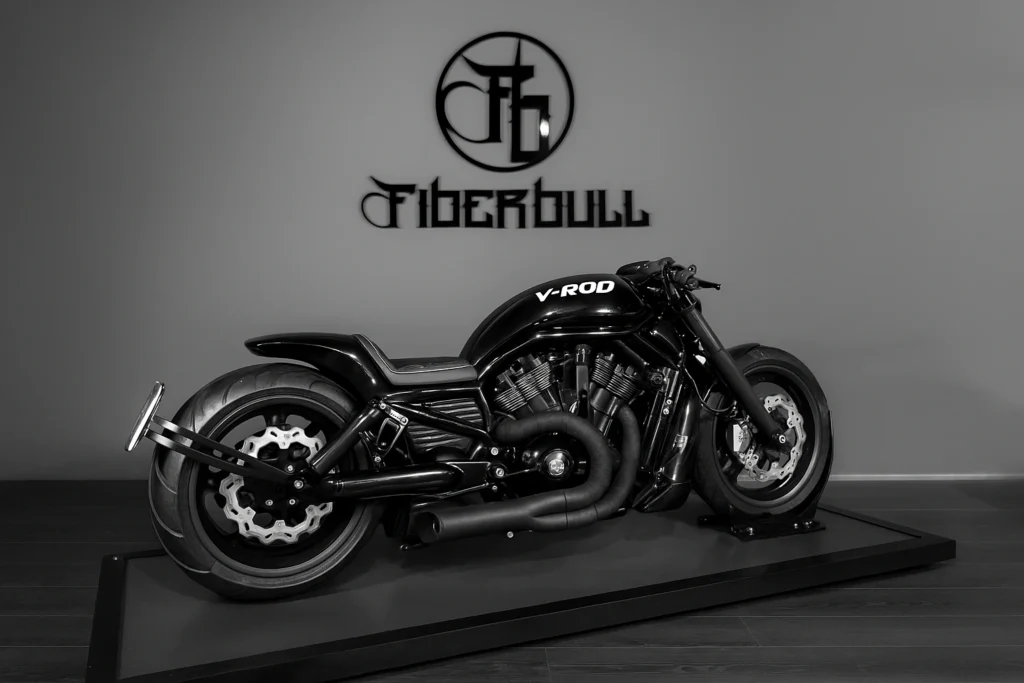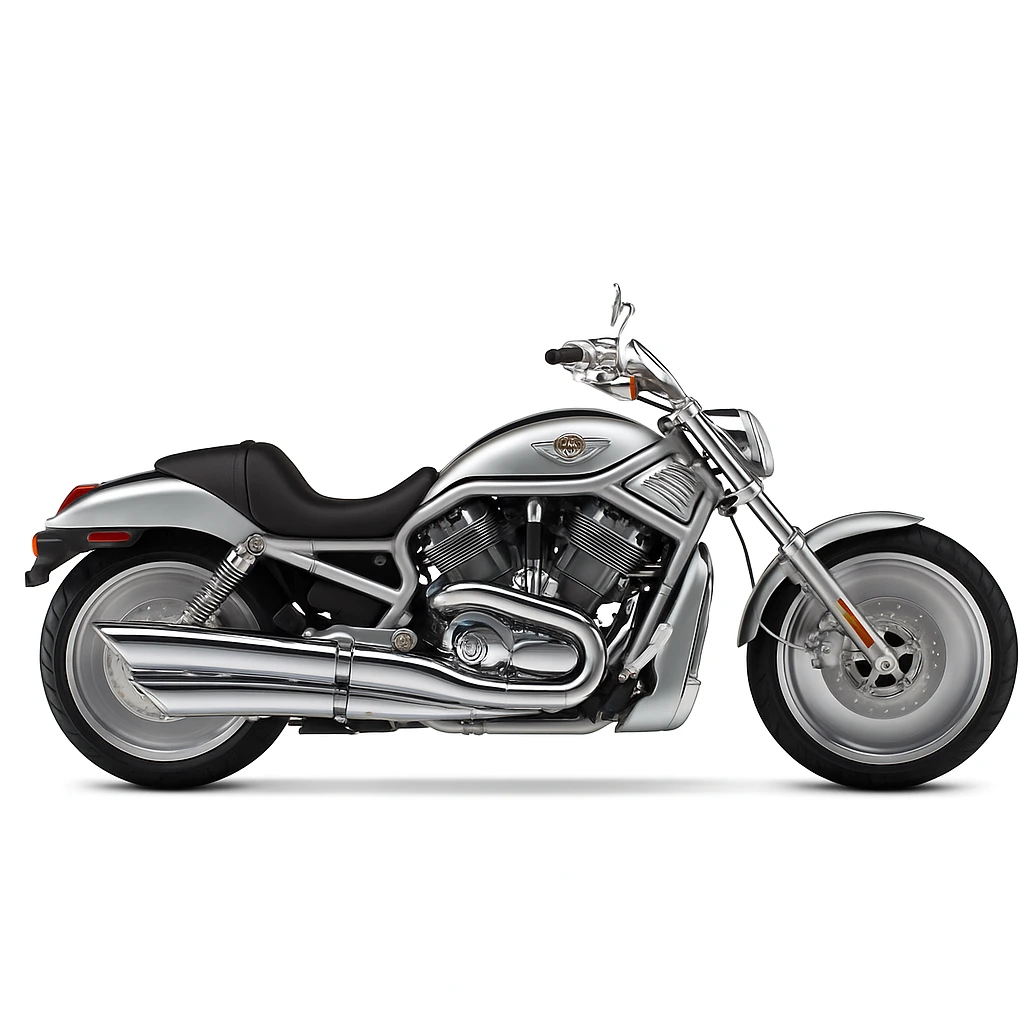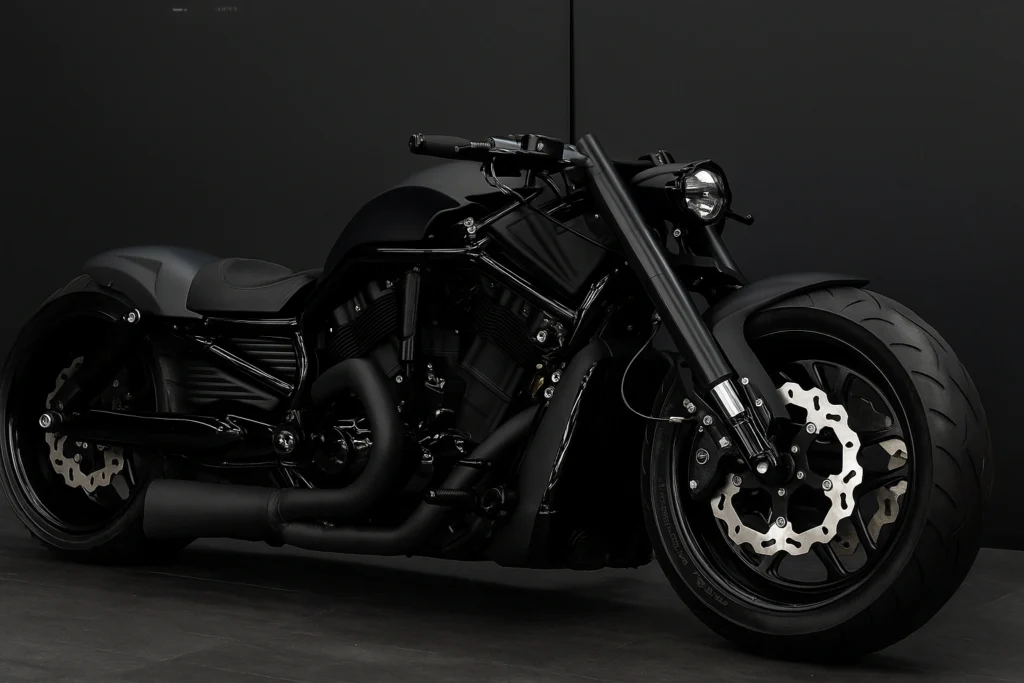Introduction
A Muscle Bike Born to Dominate
The Harley-Davidson V-Rod Muscle isn’t just a motorcycle—it’s a rebellion on two wheels. When it first roared onto the streets in 2009, it shattered Harley’s traditional mold, offering a fresh interpretation of a power cruiser. With bold design, a low-slung silhouette, and jaw-dropping performance, the V-Rod Muscle quickly became an icon for riders who craved modern aggression wrapped in Harley heritage.

Harley’s Modern Take on Power Cruisers
While Harley-Davidson built its legacy on classic styling and air-cooled V-twins, the V-Rod Muscle represented a leap into the future. It catered to a new generation of riders demanding muscle, speed, and style—all in one powerful package. The result? A bike with drag-strip DNA and the heart of a sports machine, cloaked in pure American attitude.
History of the V-Rod Muscle
Evolution of the V-Rod Series
The V-Rod series made its debut in 2001 as Harley’s first-ever liquid-cooled motorcycle family. Designed to challenge Japanese and European sport cruisers, the lineup combined performance with Harley’s signature charisma. The V-Rod Muscle, launched in 2009, took the concept further with wider bodywork, distinctive styling, and enhanced ride quality.
Launch of the V-Rod Muscle in 2009
The Muscle brought more than just cosmetic upgrades. With its streamlined airbox cover, integrated LED turn signals, and massive dual-exhausts, it looked like it came straight from a science fiction movie. Built to look aggressive and ride even harder, the Muscle quickly gained popularity among power cruiser enthusiasts.
Porsche and Harley-Davidson: The Power Duo
The Revolution Engine Collaboration
One of the V-Rod Muscle’s standout features is its Revolution engine, co-developed by Harley-Davidson and Porsche Engineering. This collaboration birthed a 1,250cc liquid-cooled, DOHC, 60-degree V-twin engine—a radical shift from Harley’s classic air-cooled designs.
Performance Specs that Redefined Cruisers
- Horsepower: 122 hp @ 8,250 RPM
- Torque: 87 ft-lbs @ 6,500 RPM
- 0-60 mph: Under 3.9 seconds
It revs higher, pulls harder, and delivers power more smoothly than any other Harley of its era.

Design and Aesthetic Appeal
Signature Styling Features
The V-Rod Muscle isn’t subtle—it’s bold and built like a brawler. Key styling elements include:
- Wide, muscular rear fender
- Deep-cut dual exhausts
- LED indicators and taillights
- Low-profile seat and drag bars
Every inch screams performance and street dominance.
Modern vs. Classic Harley Looks
While classic Harleys feature retro vibes, spoked wheels, and chrome, the Muscle boasts:
- Modern cast wheels
- Matte and metallic finishes
- Sculpted bodywork with urban flair
It appeals to a younger crowd or seasoned riders wanting something different.
Performance Breakdown
Engine and Torque Delivery
Thanks to the Revolution engine, the V-Rod Muscle delivers smooth, consistent torque across the rev range. This means strong acceleration without the rumble and shake of traditional Harleys.
Acceleration, Top Speed, and Handling
- Top Speed: ~140 mph (225 km/h)
- Handling: Surprisingly nimble for a heavy cruiser
- Braking: Dual front discs and ABS (optional) provide strong stopping power
Its drag-style ergonomics ensure a commanding presence, both visually and on the road.
Comfort and Ergonomics
Rider Triangle and Seat Position
The riding position is aggressive yet comfortable. Forward foot controls and drag bars provide:
- A stretched-out, low stance
- Ideal ergonomics for city cruising and short highway bursts
- Moderate seat height (~26.7 inches)
Suspension and Ride Quality
The suspension is firm—great for stability and control, though not ideal for rough roads. Adjustable rear shocks allow some fine-tuning.
Technology and Instrumentation
Analog-Digital Gauge Cluster
The Muscle features a combination of analog and digital readouts:
- Tachometer and speedometer
- Gear indicator
- Trip meter and clock
- Fuel gauge
Lighting, Controls, and Rider Aids
- LED turn signals (integrated into mirrors)
- Bright halogen headlamp
- Optional ABS and security system
Simple, clean, and focused on performance.

Customization Potential
Popular Aftermarket Mods
The V-Rod Muscle is a customizer’s dream. Common mods include:
- Fat tire kits (240mm or wider)
- Custom exhausts (e.g., Vance & Hines, Akrapovič)
- Tuned air intakes and fuel management systems
Custom Paint, Exhausts, and Wheels
Paint jobs with flames, skulls, or stealthy matte finishes are popular. Builders also swap wheels for forged or chrome alternatives and often add shorty exhausts for a throatier sound.
Comparing V-Rod Muscle to Other V-Rods
| Feature | V-Rod Muscle | Night Rod | Standard V-Rod |
|---|---|---|---|
| Styling | Aggressive, muscular | Sleek, dark, drag-inspired | Classic, minimal |
| Handlebars | Drag bars | Low-rise bars | Mid-rise bars |
| Rear Tire Width | 240mm | 240mm | 180mm |
| Headlight Design | Squared-off | Round and minimalist | Round |
Each V-Rod offers a different flavor—choose based on your performance and style preferences.

Real-World Riding Experience
City Riding and Commuting
The Harley-Davidson V-Rod Muscle is surprisingly nimble for a 673-pound motorcycle. Its low center of gravity and precise throttle response make it manageable in urban traffic. Riders often appreciate:
- Strong low-end torque for effortless overtaking
- Confident braking with optional ABS
- Comfortable seating for short commutes
However, its wide rear tire and limited turning radius can make tight U-turns and lane splitting a bit tricky.
Touring and Long-Distance Comfort
While not designed as a touring bike, the Muscle holds its own on highways. Key points for long-distance riding:
- The fuel tank holds 5 gallons, providing decent range (around 150-160 miles)
- The seat is low and supportive, but may need a gel pad or aftermarket upgrade for all-day rides
- Wind protection is minimal—some riders install small windscreens for better comfort at higher speeds
Overall, it’s a beast that handles highways with ease, as long as you’re prepared for its firm suspension.
Maintenance and Reliability
Common Issues and Solutions
The V-Rod Muscle is known for mechanical reliability, thanks to its Porsche-designed engine. Still, a few common issues include:
- Battery drain from security systems—keep it on a tender
- Cooling system leaks—check hoses and radiator periodically
- Drive belt wear—inspect after every 5,000 miles
Routine inspections and Harley-certified service intervals can prevent most issues before they start.
Service Intervals and Tips
| Maintenance Task | Interval |
|---|---|
| Oil & filter change | Every 5,000 miles |
| Coolant check | Every 2,500 miles |
| Brake fluid replacement | Every 2 years |
| Drive belt inspection | Every 5,000 miles |
Always use synthetic oil and Harley-approved coolant to maintain engine integrity and performance.

Fuel Economy and Running Costs
MPG Ratings and Tank Range
- City MPG: ~34
- Highway MPG: ~40
- Combined Range: ~150-160 miles per tank
While not the most fuel-efficient bike, it’s decent for a power cruiser class.
Insurance and Depreciation
- Insurance rates are moderate due to the muscle bike classification.
- Depreciation is relatively low, especially for well-maintained models with documented service and custom upgrades.
Used V-Rod Muscle prices tend to hold strong in the second-hand market due to limited production and high demand.
Availability and Market Trends
Production Years and Global Availability
The V-Rod Muscle was produced from 2009 to 2017, after which the entire V-Rod lineup was discontinued. It was sold globally and remains popular in:
- United States
- Germany and Central Europe
- Australia and Southeast Asia
Second-Hand Market Insights
With the V-Rod now out of production, clean units are becoming collectible. Expect to pay:
- $9,000 – $14,000 for low-mileage models
- Higher for customized or limited-edition versions
- Prices are increasing as availability decreases
The V-Rod Muscle is quickly becoming a modern classic.
Legacy of the V-Rod Muscle
Why It Was Discontinued
Despite its loyal fan base, the V-Rod was discontinued in 2017 due to:
- Tightening emissions regulations in Europe
- A shift back toward classic Harley designs
- The introduction of the Milwaukee-Eight engine in other Harley models
It marked the end of a bold chapter in Harley’s history.
Its Cult Following and Future Value
Today, the V-Rod Muscle is celebrated for what it was: a radical, Porsche-powered masterpiece. Enthusiast groups keep the legacy alive, and many believe its collectibility and value will only grow.

Who Should Buy a V-Rod Muscle?
Ideal Rider Profile
- Riders who crave aggressive styling and raw power
- Enthusiasts who appreciate liquid-cooled performance
- Those who want a Harley that breaks the mold
It’s ideal for experienced riders who don’t mind a muscular, heavy machine with sportbike DNA.
Pros and Cons Breakdown
| Pros | Cons |
|---|---|
| Porsche-engineered Revolution motor | Not ideal for beginners |
| Aggressive styling and street presence | Limited wind protection |
| Reliable and low-maintenance drivetrain | Discontinued—parts may become scarce |
| Customization-friendly platform | Firm ride on rough roads |
Community and Enthusiast Scene
Online Forums and Social Media Groups
- V-RodForums.com
- Harley V-Rod Owners Facebook Group
- r/Harley on Reddit
These platforms offer DIY tips, custom build showcases, and marketplace listings.
V-Rod Meetups and Events
Although not officially hosted by Harley-Davidson anymore, V-Rod riders often gather at:
- Sturgis Motorcycle Rally (USA)
- European Bike Week (Austria)
- Custom Chrome Bike Show (Germany)
These gatherings keep the spirit of the V-Rod alive and thriving.
Frequently Asked Questions
1. What makes the V-Rod Muscle different from other Harleys?
The V-Rod Muscle features a liquid-cooled, high-revving engine developed with Porsche. It’s designed for speed, performance, and aggressive styling—unlike the traditional Harley lineup.
2. Is the V-Rod Muscle beginner-friendly?
Not really. Due to its weight, power output, and aggressive ergonomics, it’s better suited for experienced riders.
3. Can I still buy a brand-new V-Rod Muscle?
No, the V-Rod Muscle was discontinued in 2017. However, you can find low-mileage, well-kept models on the second-hand market.
4. How reliable is the Revolution engine?
Extremely reliable. With proper maintenance, it can run well beyond 100,000 miles with minimal issues—thanks to Porsche engineering.
5. Is the V-Rod Muscle good for long rides?
It can handle touring with minor modifications (like a windshield and upgraded seat), but it’s primarily designed for short, aggressive rides.
6. How does the V-Rod Muscle sound?
It produces a deep, throaty roar, especially with an aftermarket exhaust. It’s smoother than traditional Harleys due to the 60-degree engine layout.
Conclusion
The Harley-Davidson V-Rod Muscle was, and still is, a powerhouse of performance, design, and innovation. It broke barriers, challenged perceptions, and offered a Harley experience like no other. Even years after its discontinuation, it continues to turn heads and fuel the passion of motorcycle enthusiasts around the globe.
Whether you’re seeking a unique ride, a high-performance cruiser, or a piece of Harley history, the V-Rod Muscle stands tall as a muscle-bound icon in the world of two wheels.
